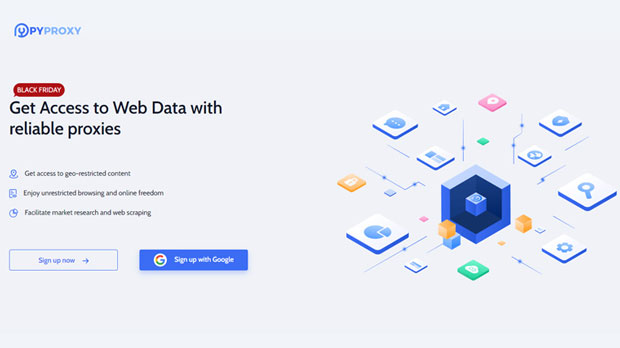Choosing the right proxy generator tool is crucial for anyone who needs to maintain privacy, anonymity, and security while browsing the internet or performing web scraping tasks. A good proxy generator tool can help users mask their IP addresses, circumvent geographic restrictions, and avoid detection by websites. However, with so many options available, it’s essential to evaluate factors such as reliability, speed, security features, and cost-effectiveness before making a decision. In this article, we will break down the key aspects of choosing the ideal proxy generator tool to meet your specific needs. Understanding Proxy Generators and Their ImportanceA proxy generator is a tool that provides users with a set of proxies, which act as intermediaries between the user's device and the internet. When you use a proxy, your internet traffic is routed through an external server, allowing your actual IP address to remain hidden. This is crucial for various online activities, such as web scraping, bypassing geo-restrictions, or simply maintaining privacy online.The primary role of a proxy generator is to create or provide access to a pool of IP addresses from different geographical locations. These proxies can be either shared or dedicated, depending on the needs of the user. Shared proxies are more affordable but tend to be slower and less secure, while dedicated proxies offer better performance and security but come at a higher cost.Key Factors to Consider When Choosing a Proxy Generator Tool1. Types of Proxies OfferedDifferent proxy generators offer different types of proxies. It is essential to understand which type suits your needs. There are three main types of proxies:- HTTP/S Proxies: These are typically used for web browsing and are the most common types of proxies. They are suitable for accessing websites without revealing your real IP address.- SOCKS Proxies: SOCKS proxies work at a lower level and can handle any type of internet traffic, including P2P, torrents, and even online gaming. They are more versatile but can be slower than HTTP/S proxies.- residential proxies: These proxies are provided by Internet Service Providers (ISPs) and are associated with actual residential addresses. They offer high anonymity and are less likely to be flagged by websites. However, they tend to be more expensive.- datacenter proxies: These proxies are provided by data centers and are not linked to real residential IPs. They are faster and more affordable but are more likely to be blocked by websites that detect non-residential IP addresses.It is important to consider which type of proxy fits your specific use case, as each type offers different levels of performance, anonymity, and cost.2. Reliability and SpeedOne of the most important factors when selecting a proxy generator is its reliability and speed. You want to make sure that the proxies provided by the tool are stable and capable of handling your specific online activities without interruption. For tasks such as web scraping or accessing geo-blocked content, fast and reliable proxies are essential for efficiency.Make sure the proxy generator offers a high uptime rate (preferably 99% or higher) to ensure that your browsing experience or online activities remain uninterrupted. Speed is also critical for users performing activities like web scraping or streaming, where delays can lead to inefficiencies or a poor experience.3. Security FeaturesA good proxy generator should also offer robust security features. Depending on the proxy provider, these features can vary, but they typically include encryption, protection against IP leaks, and support for SSL/TLS protocols. Security is especially important when browsing sensitive websites or engaging in activities that require maintaining anonymity.Additionally, ensure that the proxy provider offers features such as IP rotation, which helps avoid detection and reduces the chances of being blocked by websites. IP rotation allows you to change your proxy ip regularly, making it harder for websites to trace your activities back to your original IP.4. Geographic CoverageAnother factor to consider when choosing a proxy generator tool is the geographic coverage of its proxy network. Depending on your use case, you may need proxies from specific countries or regions. For example, if you are attempting to access geo-restricted content, you will need proxies from the countries where that content is available.Check if the proxy generator tool offers proxies from a wide range of locations. A good proxy service should have a network that spans multiple countries and regions to provide flexibility in accessing content from various parts of the world.5. Customer SupportCustomer support is an often-overlooked but vital factor when choosing a proxy generator. Technical issues may arise while using proxies, and having reliable customer support can make a significant difference in resolving these problems quickly.Make sure the proxy generator provides support through multiple channels, such as email, live chat, or phone. It’s also beneficial to check if they offer a knowledge base or user forum where you can find solutions to common issues.6. Pricing and Value for MoneyThe cost of proxy services can vary significantly depending on the type of proxy and the features provided. It's essential to assess whether the price aligns with the quality and features offered by the proxy generator.While some tools may offer low prices, it’s important to consider the long-term value rather than just the initial cost. Cheaper proxies may come with performance issues, limited support, or low reliability. On the other hand, more expensive tools may offer better performance, security, and support.Look for a balance between cost and quality. Consider opting for a service that offers a free trial or a money-back guarantee, so you can test the tool’s functionality before committing to a subscription.7. Reputation and ReviewsBefore choosing a proxy generator, it’s a good idea to research user reviews and feedback. Reputable tools often have positive reviews from users who have successfully utilized their proxies for various online tasks. Look for reviews on independent websites or forums, and avoid relying solely on testimonials from the provider's website.If possible, try to find reviews from users who have similar needs to yours, whether it’s for web scraping, privacy, or bypassing geo-restrictions. This will give you a better understanding of how well the proxy generator performs for your specific use case.Selecting the right proxy generator tool requires careful consideration of several factors, including the types of proxies offered, reliability, security features, geographic coverage, customer support, pricing, and the tool’s reputation. By evaluating each of these elements, you can make a well-informed decision that meets your specific needs.In summary, it’s crucial to choose a proxy generator tool that aligns with your online objectives, offers a high level of security and performance, and provides the best value for money. By doing so, you can ensure a seamless and secure online experience, whether you're browsing the web privately, conducting research, or accessing restricted content.
Apr 23, 2025
![arrow]()



























































